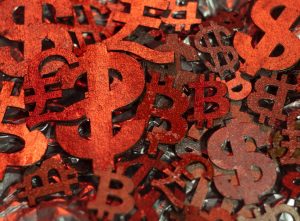The foreign exchange (forex) market is the largest and most liquid market in the world, with an average daily trading volume of over $5 trillion. It is also one of the most volatile markets, with exchange rates fluctuating rapidly in response to global economic and political events. Banks are major players in the forex market, and they use a variety of tactics to influence exchange rates and maximize profits. In this article, we will explore how banks manipulate the forex market.
1. Front Running
Front running is a practice where a bank trades on behalf of a client, but before executing the trade, the bank takes a position on the same asset for its own account. This allows the bank to profit from the price movement that will occur as a result of the client’s trade. For example, if a bank knows that a client is about to buy a large amount of a particular currency, it may buy that currency in advance, causing the price to rise, and then sell it to the client at a higher price.
2. Insider Trading
Insider trading is a form of market manipulation where a bank uses non-public information to make trades that will generate profits. For example, if a bank has access to information that a country’s central bank is about to raise interest rates, it may buy that country’s currency in advance, causing the price to rise, and then sell it at a higher price after the interest rate hike is announced.
3. Collusion
Collusion is a practice where banks work together to manipulate exchange rates for their mutual benefit. For example, if two banks agree to buy and sell a particular currency at a certain price, they can create an artificial demand for that currency, causing the price to rise. They can then sell the currency at a higher price, generating profits for both banks.
4. Stop Loss Hunting
Stop loss hunting is a practice where a bank uses its market power to trigger stop loss orders placed by retail traders. Stop loss orders are placed by traders to limit their losses if a particular currency pair moves against them. Banks can use their market power to push the price of a currency pair down, triggering stop loss orders and causing a cascade of selling that drives the price even lower. The bank can then buy the currency at a lower price, generating profits.
5. Spread Manipulation
Banks make money in the forex market by charging a spread, which is the difference between the bid and ask prices of a particular currency pair. Banks can manipulate spreads by widening them during times of high volatility, such as during major economic announcements or political events. This can make it more expensive for traders to enter and exit trades, generating profits for the bank.
6. Order Flow Manipulation
Order flow manipulation is a practice where banks use their market power to influence the flow of orders in the forex market. For example, if a bank knows that a large number of buy orders are about to be placed for a particular currency pair, it may sell that currency pair in advance, causing the price to fall. It can then buy the currency pair at a lower price, generating profits.
In conclusion, banks are major players in the forex market, and they use a variety of tactics to manipulate exchange rates and maximize profits. While some of these tactics may be legal, others are illegal and can result in fines and legal action. As a trader, it is important to be aware of these tactics and to understand how they can affect your trades.





